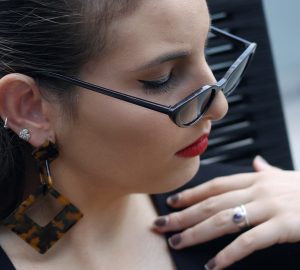“FASHION FILM” by Matthew Frost
According to the short viral parody video ironically titled “Fashion Film,” directed by photographer and filmmaker Matthew Frost and starring “Mean Girls” actress Lizzy Caplan, a fashion film is “just a commercial.” Unfortunately, I find this indicative of how most people interpret the purpose and validity of fashion films.
This video, which serves as a creative film-based advertisement for the Viva Vena Collection from the fashion house Vena Cava, is targeted towards fashion-conscious, bohemian millennials. Caplan’s narrative voice-over begins after the first frame flashes a faux credit from “The Best Fashion Film Festival Ever.” Caplan is then seen wearing a flower crown, prancing around in front of green foliage and waving ribbons. The scene cuts and there is favor. Caplan stares blankly into the camera as the narrative opens with, “when I’m alone, I like to pretend I’m in a movie. The kind of movie I don’t quite understand.” Frost and Vena Cava attempt to set themselves apart from the more high-brow, high-fashion designers and houses that would usually use the traditional fashion film formula. That is, a non-storyline-based production with voice-over or musical tracks set over abstract jump cuts of the designer’s pieces being blown about to show the movement of the garment.
SHOWstudio: Thoughts on Fashion Film – Nick Knight
Above is an interview with Nick Knight, director and founder of SHOWstudio: The Home of Fashion Film and Live Fashion Broadcasting. Knight agrees that the movement of the garment is the primary focus of the designer and for a fashion film. Knight created SHOWstudio to give fashion films a platform because, “allowing some sort of system where you can see the process of creating a piece of art is important because it benefits the art, the artist and the audience.” It also gives people the opportunity to see the process of creating a fashion film, which ultimately places fashion back on a pedestal of being a form of expression, rather than a form of vanity or “sin.”
Knight believes that a great fashion film is made by great fashion and that, “the narrative is in the garment, created by the designer, and not by a ‘superfluous’ event sequence, narrative imposed by a script or liner story.” Knight goes on to say that we must understand that, “a fashion film is as different from film as fashion photography is from photography.” In his opinion, there are only a few people that are producing great fashion films, yet that isn’t the issue. The real problem has to do with the misunderstanding of the advancements in media and communication. In his interview, Knight also communicates his understanding and recognizing that the new medium of fashion film is an internet supported medium. Knight’s views are mirrored by an article on retailtouchpoints.com, which states, “approximately 54 percent of consumers use their devices to compare prices, others search for product information (48.4 percent) and reviews (42 percent).”
It’s apparent that, with each advancement in online and social technology, the fashion industry has to continually adapt and learn how to communicate to and reach their target consumers that are spending most of their time online. Many streetwear brands are doing this by taking advantage of product placement in the now popular viral scripted skits that feature social media influencers. Luxury auto companies are also creating films to aid in the launch of their new autonomous and technologically advanced vehicles, while many beauty and hair brands are creating movie-style trailers to promote their services.
So, if it is “just a commercial,” then fashion films are simply film-based advertisements for fashion brands. I, however, would like to see the genre evolve, much like the advertising industry, which recognizes that consumers no longer like to be “advertised to” or sold something. Instead, branded content that presents itself like entertainment-based content is being produced. I believe that, if fashion films are conceptualized with the true essence of a narrative film in mind, they will be more than commercials. They will be recognized as shorts or feature films, rather than deemed as just costumes.
As Knight mentioned, fashion film is in its infancy stage. Much like fashion photography established itself when it became more successful than fashion illustration, fashion films are still establishing their perimeters. While the question of what a fashion film is stimulates different opinions and answers, it’s evident that there’s an emerging industry that has yet to be defined. It will be up to its audience and its creators, whether an advertiser, a fashion filmmaker or a fashion designer, to determine what category it will fall in: “just a commercial?” or a fashion film.























